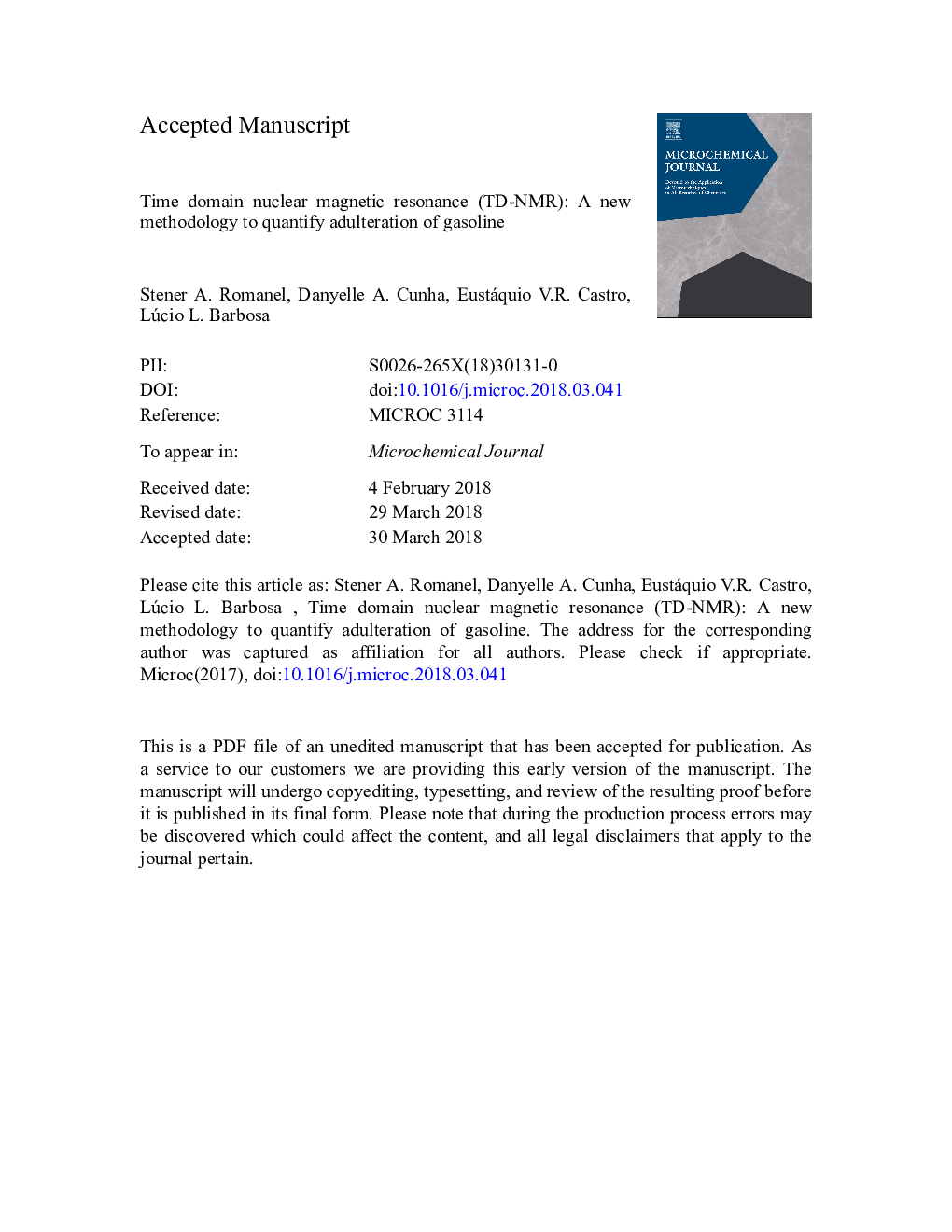| Article ID | Journal | Published Year | Pages | File Type |
|---|---|---|---|---|
| 7640281 | Microchemical Journal | 2018 | 24 Pages |
Abstract
The high consumption of gasoline in the Brazilian highway sector (around 32.1%) makes the fuel adulteration a target, especially due to the content of anhydrous ethanol. The excess of ethanol in gasoline beyond the 27% limit (v/v) that is the maximum content allowed by the Brazilian National Agency of Petroleum, Gas and Biofuels (ANP) can cause premature corrosion in the fuel tank, and problems with ignition and engine performance problems. This work proposes the application of a new methodology, time domain nuclear magnetic resonance (TD-NMR) to detect the adulteration of gasoline with ethanol. The results showed that the commercial gasoline has transverse relaxation time (T2) changing between 2.02 and 2.05Â s, while the ethanol has T2 equal to 1.6Â s. Samples adulterated with percentage of ethanol between 5% and 50% (v/v) showed T2 ranges between 1.70Â s and 2.05Â s. The methodology proposed here showed excellent agreement with infrared in the middle region (MIR) and can used to diverse commercial gasoline. Besides, TD-NMR is simple, the measure are rapid, non-destructiveness and data are easy to be interpreted.
Keywords
Related Topics
Physical Sciences and Engineering
Chemistry
Analytical Chemistry
Authors
Stener A. Romanel, Danyelle A. Cunha, Eustáquio V.R. Castro, Lúcio L. Barbosa,
